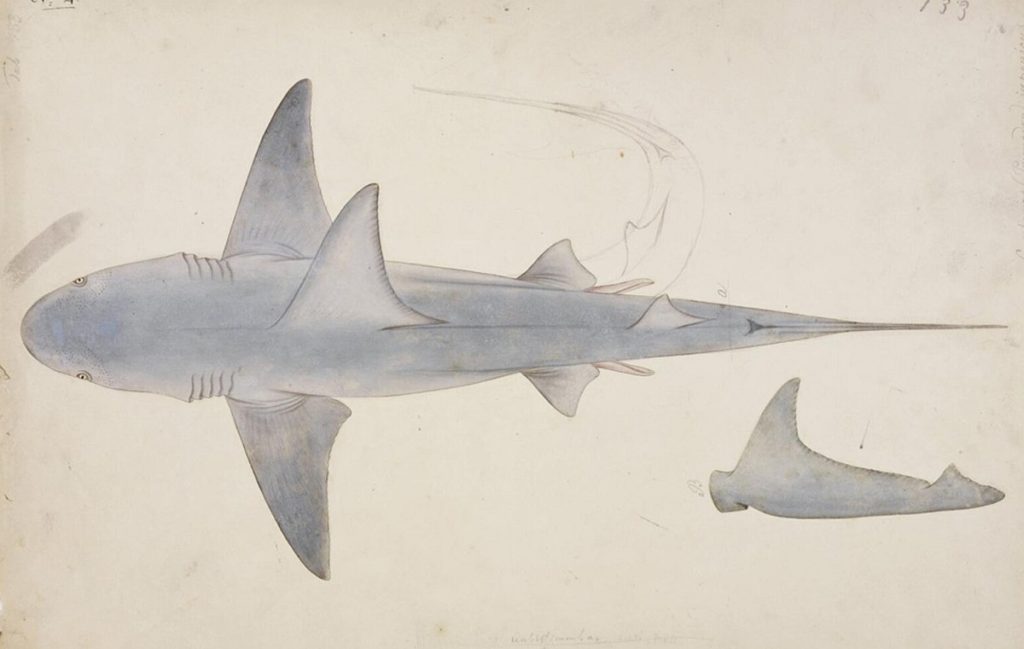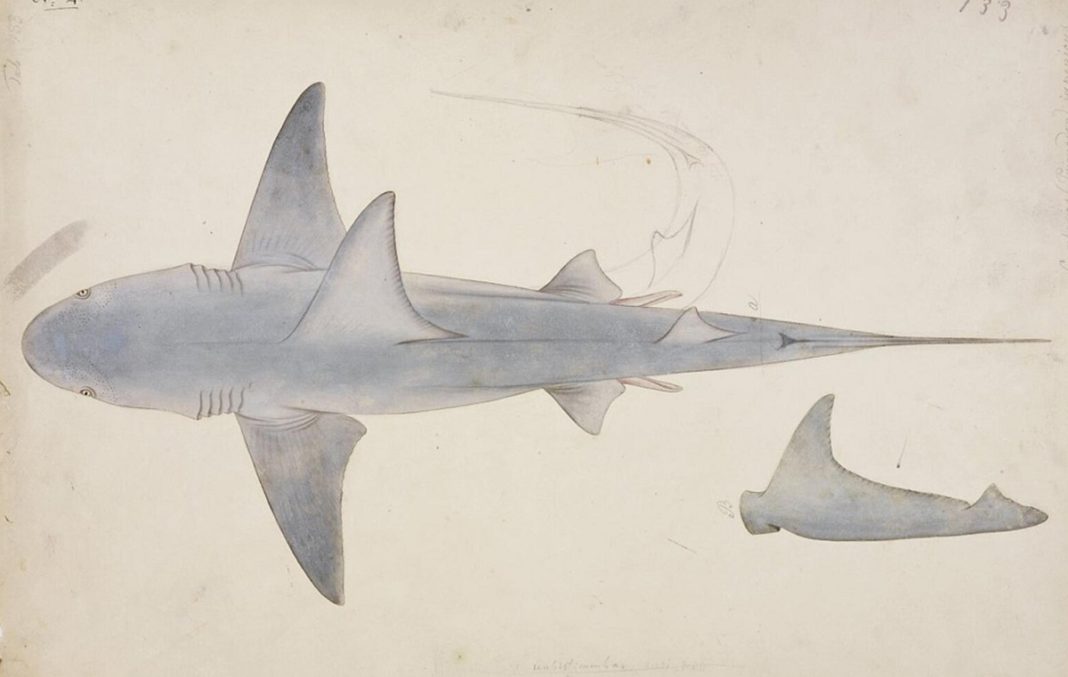The Ganges shark (Glyphis gangeticus) is a critically endangered species of shark found in the Ganges River and the Brahmaputra River of India and Bangladesh.

While the other members of the genus Glyphis occur in coastal marine waters as well as rivers, the Ganges shark is found only in freshwater, making it the world’s only exclusively freshwater shark.
The Ganges shark is a relatively small shark, growing up to 2.2 meters long. The Ganges shark has a broad snout and a long, pointed tail. It has a gray or brown body with a white belly. The dorsal fins are small and spineless.
The shark’s small eyes and slender teeth suggest that it is primarily a fish-eater and is adapted to turbid water. With such limited visibility typical of many tropical rivers and estuaries, other senses − such as hearing, smell, and electroreception − are likely used for predation.
The Ganges shark is a critically endangered species due to habitat loss and overfishing. The Ganges River is one of the most polluted rivers in the world, and the shark is often caught as a bycatch in fishing nets.
According to the Internet















